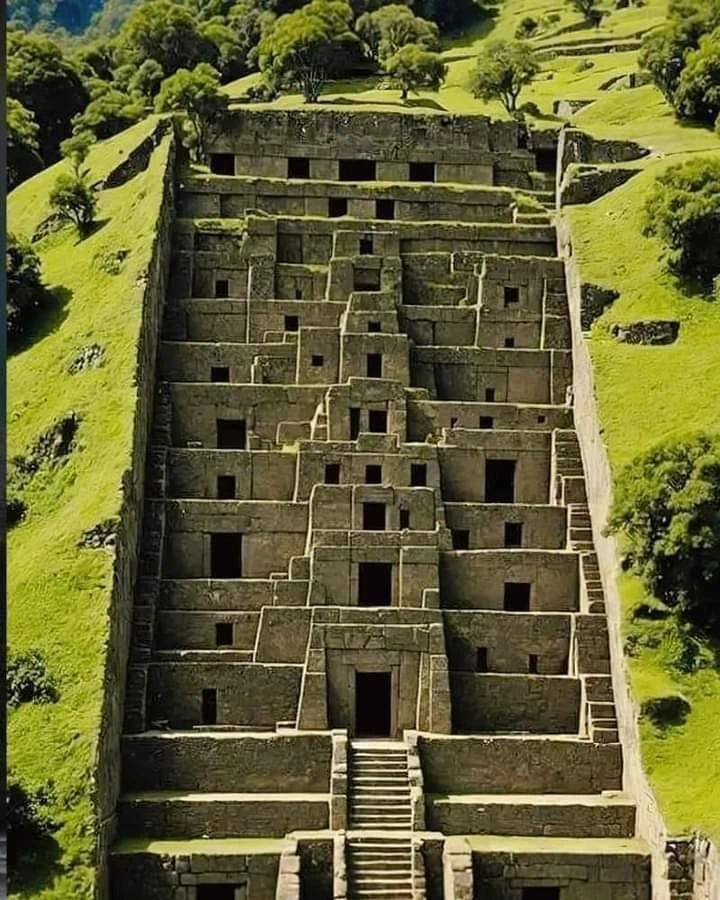Peru stands as a testament to the grandeur of pre-Columbian civilization, where breathtaking ruins and enigmatic structures narrate the stories of lost empires and ancient wisdom. Across the country, from towering mountain fortresses to enigmatic desert carvings, these archaeological marvels continue to captivate visitors and researchers alike. They offer a rare glimpse into humanity’s past, revealing a world where sophisticated engineering, intricate urban planning, and celestial alignment played a crucial role in daily life. These remnants of ancient civilizations are not just relics of the past; they are windows into a time when human ingenuity thrived in perfect harmony with nature.

The Majestic Heights of Machu Picchu
Among Peru’s archaeological wonders, none is as famous as Machu Picchu. Perched high in the Andean mountains, this awe-inspiring citadel remains one of the greatest testaments to Incan ingenuity. Discovered by explorer Hiram Bingham in 1911, Machu Picchu’s breathtaking stone structures, terraced fields, and sophisticated irrigation systems reflect an advanced understanding of engineering and environmental adaptation. Every stone in its walls was precisely shaped and fitted without mortar, demonstrating an architectural mastery that has withstood centuries of seismic activity. The site’s alignment with celestial events further underscores the Incas’ deep connection to the cosmos. To this day, Machu Picchu’s true purpose remains a subject of debate, with theories ranging from a royal retreat to a sacred religious center. Regardless of its original function, its enduring presence continues to inspire awe and admiration.
Choquequirao: The Hidden Sister City
While Machu Picchu draws millions of visitors each year, its lesser-known counterpart, Choquequirao, remains an untouched gem in the Apurímac Valley. Often referred to as the “sister city” of Machu Picchu, Choquequirao shares many architectural similarities, including impressive terraces, ceremonial plazas, and intricate stonework. Unlike its famous sibling, however, Choquequirao remains largely hidden from the tourist masses due to its remote location, accessible only by a demanding multi-day trek. This isolation has preserved much of its authenticity, allowing archaeologists to continue uncovering invaluable insights into Incan urban planning and cultural traditions. Some experts even speculate that Choquequirao may have served as a final stronghold for the Incas during the Spanish conquest. As excavations continue, the site’s mysteries slowly unravel, shedding light on the empire’s resilience and strategic genius.
The Mysterious Nazca Lines: Ancient Artists of the Desert
Stretching across Peru’s coastal desert, the Nazca Lines remain one of the most perplexing archaeological enigmas in the world. Created between 500 BCE and 500 CE by the Nazca civilization, these massive geoglyphs feature geometric patterns, animal figures, and humanoid shapes that can only be fully appreciated from the air. The sheer scale of these designs, some stretching hundreds of feet across, raises numerous questions about their purpose and construction. How did the Nazca people, without access to aerial perspectives, create such precise and large-scale artwork? Theories regarding their function range from religious or astronomical significance to messages intended for deities. Some researchers believe the lines align with celestial bodies, possibly serving as an ancient observatory, while others suggest they were pathways used in sacred rituals. Despite extensive study, their exact meaning remains elusive, adding to the allure and mystery of Peru’s ancient cultures.
Agricultural Innovation at Moray: The Incan Laboratory
Nestled in the Sacred Valley, the concentric terraces of Moray stand as a remarkable testament to Incan agricultural expertise. Unlike any other archaeological site in Peru, Moray’s circular terraces resemble a vast amphitheater, descending in meticulously designed layers. These terraces were not merely aesthetic; they functioned as an agricultural experiment, allowing the Incas to simulate different microclimates. Each level of Moray mimicked specific altitudes found across the Andes, enabling the Incas to test crop adaptability in varying conditions. This level of scientific precision showcases their advanced knowledge of environmental science, soil fertility, and climate adaptation. The site likely played a crucial role in developing the vast agricultural network that sustained the Incan Empire. Even today, researchers study Moray’s innovative design, recognizing its potential applications in modern agricultural sustainability.
Sacsayhuamán: The Stone Fortress Guarding Cusco
Towering above Cusco, the once-mighty capital of the Incan Empire, Sacsayhuamán remains one of the most impressive feats of ancient engineering. Constructed with massive stones, some weighing over 100 tons, the fortress walls were fitted with astonishing precision, so tightly joined that even a blade of grass cannot pass between them. This sophisticated construction method not only ensured the site’s durability but also allowed it to withstand earthquakes that have destroyed many modern buildings in the region. While primarily serving as a military stronghold, Sacsayhuamán also held great ceremonial importance. Today, it continues to play a vital role in Peruvian culture, hosting the annual Inti Raymi festival, a vibrant celebration honoring the sun god Inti. This connection between past and present highlights the enduring legacy of Incan traditions, preserved through both monumental architecture and living cultural practices.
The Enduring Legacy of a Great Empire
These archaeological wonders collectively tell the story of a civilization that, despite the lack of a written language, communicated its knowledge, beliefs, and technological advancements through stone. The Incan Empire’s profound understanding of astronomy, engineering, and agriculture allowed them to construct cities that harmonized with their natural surroundings, creating some of the most enduring monuments in human history. Each of these sites—whether the breathtaking heights of Machu Picchu, the secluded ruins of Choquequirao, the enigmatic geoglyphs of Nazca, the experimental terraces of Moray, or the formidable fortress of Sacsayhuamán—offers a unique perspective into the achievements of this once-great civilization.
Today, as modern explorers and scholars walk the ancient paths of Peru, they partake in an ongoing journey of discovery. These ruins are more than just historical landmarks; they are powerful reminders of human creativity, adaptability, and resilience. The legacy of the Incan Empire continues to captivate the imagination, inspiring new generations to unlock the secrets left behind in the stones. While empires may rise and fall, their achievements endure, waiting patiently beneath the Andean sun to reveal their hidden truths to those who seek them.





